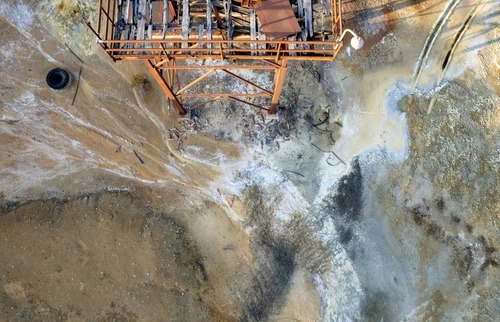
U.S. Rep. Matt Cartwright (D-PA) joined local partners in Scranton last week to discuss the impact the Bipartisan Infrastructure Act will have on reclaiming and cleaning up abandoned mine lands (AML) in Northeastern Pennsylvania.
The Infrastructure Act includes $21 billion in funding to address Legacy Pollution and can be used to clean up brownfield and superfund sites, as well as reclaim abandoned mine lands and plug orphan oil and gas wells.
The Congressman said Pennsylvania has more unreclaimed abandoned mine land acreage than any other state in the country and represents nearly 41 percent of the country’s reclamation costs. The Infrastructure Act will provide nearly $3.8 billion to Pennsylvania for reclamation efforts.
“With these funds, we will be able to reclaim our land and water from mine run-off, protect and create jobs and grow our economy. And to do it, we need our public and private partners to be talking to these three folks and their peers who are familiar with the work and who know our needs,” Cartwright said. “We need municipal and county leaders and landowners to get involved. We need them to help identify places for remediation or ask if they have a mine running under them and how they can give these environmental remediation efforts access.”
Cartwright said the Infrastructure Act would improve the environment by reducing air and water pollution created by the abandoned mine sites. He noted that economic development activities are likely to result from the reclamation efforts and will positively impact Northeastern Pennsylvania’s growing economy.
Bobby Hughes, executive director of the Eastern Pennsylvania Coalition for Abandoned Mine Reclamation (EPCAMR), and other advocates, joined Cartwright in the discussion.
“EPCAMR is interested in continuing to develop positive relationships and open dialogue with private landowners and entities across NE PA that may or may not be aware that their land and associated mine water pollution from abandoned mine drainage could be eligible for funding under the Surface Mining Control and Reclamation Act of 1977 and the Bipartisan Infrastructure Investment and Jobs Act. No shovels will get put into the ground or funds put on the table without the consent of the landowner where these historic problem areas and features are located in our coalfield communities.” Hughes said. “We want to help facilitate access agreements, conduct water quality and flow monitoring, connect landowners with private companies interested in reclamation and mine water cleanup, advocate for clean energy alternative projects such as solar or mine pool geothermal projects, ensure that any liability concerns are addressed and resolved, navigate potential funding sources, and work with them to restore our watersheds impacted by past mining practices.”